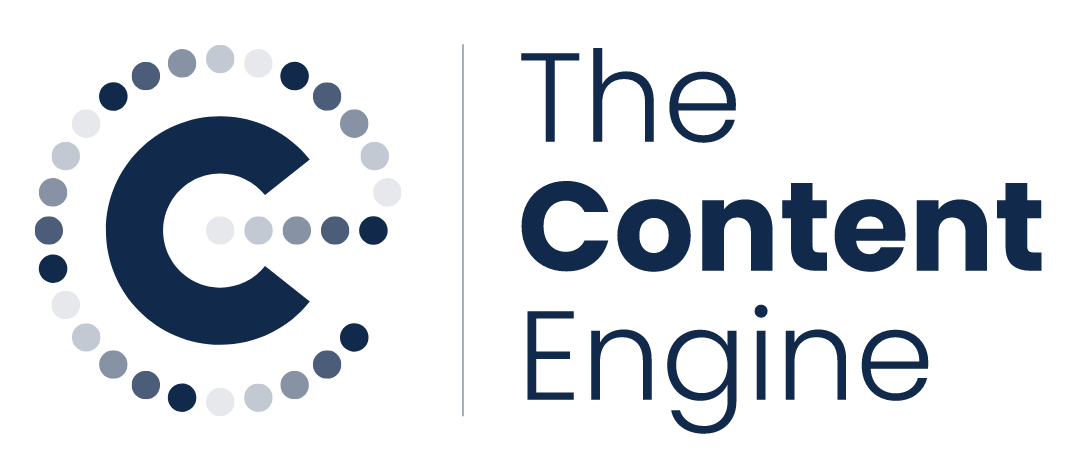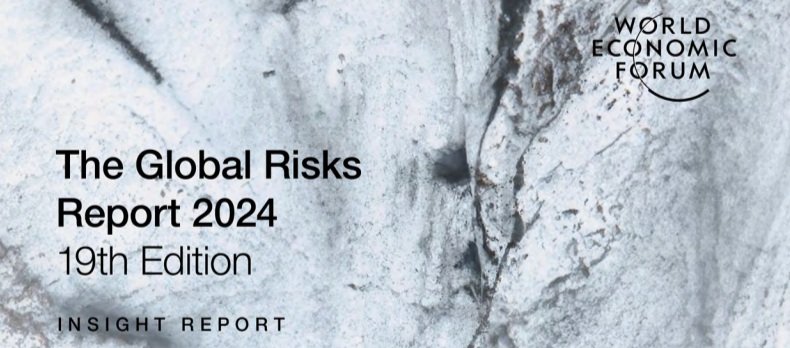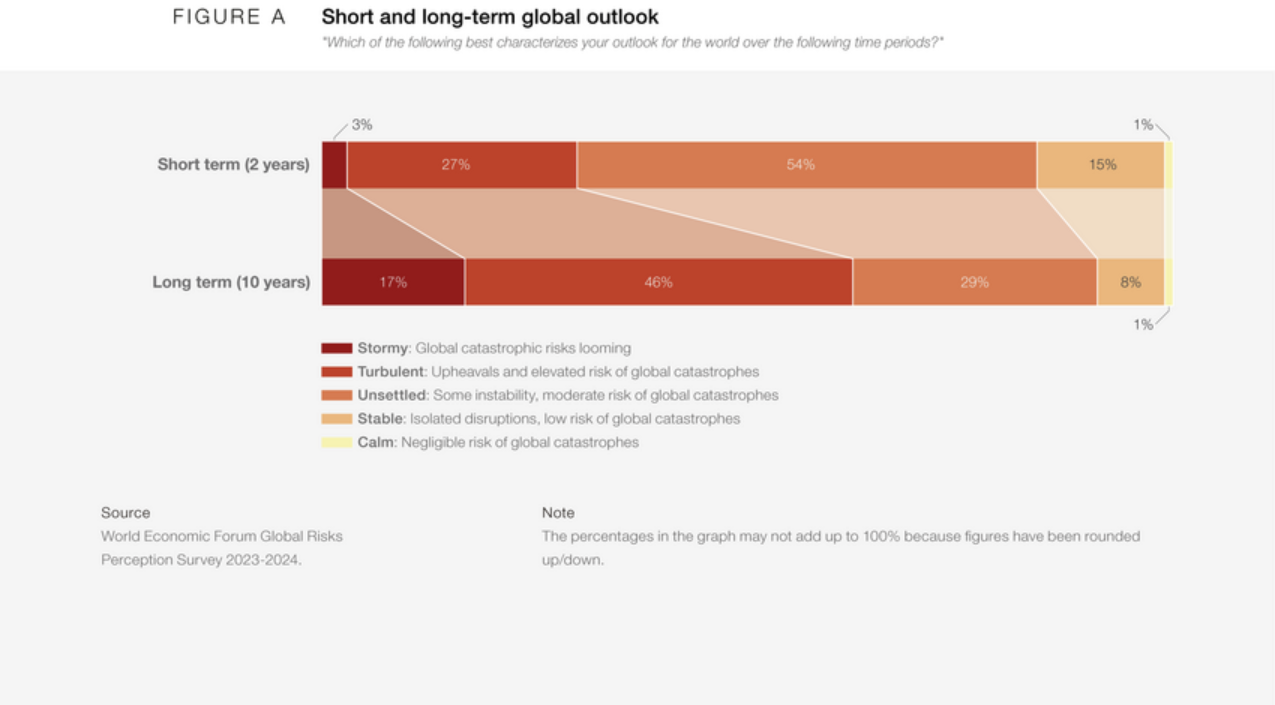Global Risks Report 2024: reach new audiences with report-led content
In 2023, LinkedIn's algorithm was tweaked. Content relevance became king. Drawing on high-profile global reports to inspire your content can boost that relevance factor.
Global reports have a large audience. Creating content at the intersection of your work and the report can help reach and engage new people.
The challenge is how to extract the relevant points from these hefty documents and translate them into engaging content formats.
The World Economic Forum’s annual Global Risks Report in particular is appealing to a wide audience and provides a wealth of valuable insights into global risks and trends, making it an ideal foundation for producing high-quality digital content throughout the year.
What is the Global Risks Report?
The Global Risks Report is an annual publication by the World Economic Forum that identifies and analyses the profound challenges shaping the global landscape, and how these risks may evolve into the future.
Beyond being a strategic tool for policymakers, risk managers, and other professional industries, the Global Risks Report serves as a reservoir for content creators, offering a year-round source of ideas, statistics, and insights.
Go chapter by chapter
Start with the report's biggest takeaways. What topics are most relevant to your audience?
The Global Risks Report covers everything from climate to AI and cybersecurity. Ask yourself these questions when narrowing down your focus:
Which sections answer questions that our customers have asked?
Which topics can our organisation comment on with authority?
Does the report contents impact our business goals, and how can we communicate this?
What kind of engagement do we want to see from the content we create?
The overarching themes can be used to create flagship articles, thought-leadership pieces, and long-form videos.
These are the pieces you want to produce first to help set the scene and provide context for future content. Specific sections of the full report can then be used to create blog posts and visual content for social media that unpack topics throughout the year.
Break down jargon and complex information
The Global Risks Report is complex. From industry-specific terminology to abbreviations and acronyms, the report language may be stopping some audiences from reaping the full benefits.
Don’t assume your audience has all the knowledge. Content that explains key topics, phrases and words provides an easy entry point for audiences that aren’t familiar with your sector or work.
Depending on who you are trying to reach, your approach to explainer content can change:
Stakeholders and potential partners: create thought-leadership articles from in-house experts to inform stakeholders of how your organisation is responding to new risks.
New audiences: use simple infographics to reach new audiences who want a better understanding of the data. Through storytelling videos or interviews, offer insights into relatable, real-world solutions and challenges related to your industry.
Peers and customers: show your audience your authority and knowledge of the topic with carousels defining core concepts and their impacts. A four-frame carousel could follow this template: concept, context, impact, solutions/next steps.
The data is there to help
Reports teem with data and statistics. Select the most striking numbers and use them to tell your story. What is surprising or impressive about each data point and how does it align with your organisation’s messaging on the topic?
You may also want to consider the type of reaction you want from this content: is it intended to highlight the significance of a situation, create an emotional impact with your audience or spur them into action?
Once you know how you intend to use the data, it's important to remember that a statistic is an entry point. You need to give it weight by adding context and relevant commentary to inform your audience. Is this data indicative of a trend, a turning point, or an anomaly? What are the real-world implications?
Adding your own take on the data reduces the chances it will be misinterpreted, and positions you as an authority with knowledge in this space.
Finding formats that fit
Not all audiences absorb information the same way, and not all content types suit each piece of information.
There are plenty of graphs and other visual data sets scattered through the Global Risks Report. While they work in a report, they may be too complex to stop the scroll on social media. Here are three ways you can transform this data into scroll-stopping content specifically for social media:
Detailed charts illustrating the economic impact of global risks become an infographic showing the top three risks for your industry. Use concise data points and eye-catching graphics to make your audience stop and look.
Animate information about how the landscape of risk is changing into a 30 second timeline. Add a call to action linking to your thought leadership piece on the same topic so it’s easy for your audience to find more information.
Present impactful statistics in social cards or animated graphics. Offer your insight or context in the social copy, and link back to the report.
Reuse, replay, update
For content creators, what's the best thing about an annual report? It’s a great opportunity to revisit, replay and update the content you created for the previous report. Ask yourself these questions:
What did the previous report get right?
Did anything surprising happen in the last year that the report didn’t mention?
What comparisons can be drawn between real-world events and the abstract themes in the report?
There are two questions to ask of your report-based content, to determine its success:
Is it accessible?
Is it visually appealing?
If you need help passing this test, we can help. From identifying the themes in the report which are most relevant to your audience, to pulling the best stats and creating a suite of content for social media, The Content Engine can help you inspire and inform.


